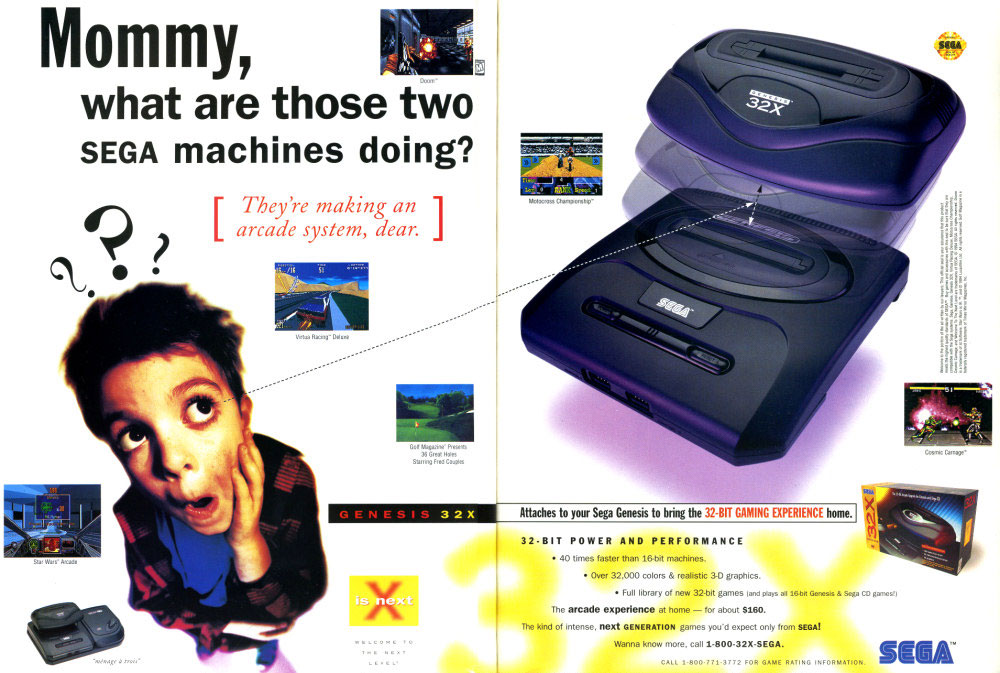(Long, rambling spiel ahead, be warned.)
It's always fun to see another Sega Saturn thread. It's hard to believe it's been 25 years since its Japanese launch. A fantastic system and one that is well worth playing today. It's probably my favorite Sega console of them all, thanks to its superb arcade titles and diverse software library. If you enjoy Sega arcade hits, fighting games, spaceship shoot-em-ups and Strategy-RPGs, you'll love the Saturn.
The hardware has always received endless grief, but I find myself admiring what Sega did in those days, how the multiple console projects evolved and changed from 1991-1994, and the sheer inventiveness of their engineers and programmers. They really did try to thread the needle between 2D and 3D, and this move was universally criticized by the late '90s, but it has also endeared the console to today's retro gamers who hunger for classic 2D pixel art games.
While it's true that the hardware design was complex for its time, and the learning curve was much steeper than the Sony Playstation, which was geared far more successfully towards Western studios, the multi-processor design was perfect for Assembly coders and programmers who liked to think outside the box. In its best moments, Saturn could pull off some amazing visuals that combined 2D sprites and bitmaps with 3D polygons.
I'm playing Virtua Fighter Remix right now and am quite impressed at how Sega AM2 thought to use the VDP2 background planes for the arenas instead of polygons. Whoever thought up that idea was a genius. The Panzer Dragoon Trilogy also demonstrates brilliance in fusing 2D and 3D to create immersive worlds.
Saturn's 3D games don't get enough respect for the high screen resolutions or smooth frame rates. That was Sega's trademark, and while it fell wildly out of fashion during the Playstation's rise, it swung back into style with Dreamcast. Japanese developers were far more successful in exploiting that hardware design than most Western counterparts, and the reasons for this range from programmers' skill sets to Sega of America's lack of proper documentation or support, experience in Assembly versus C, and good 'ole time and budget constraints. Thankfully, there are examples of excellent Western developers, and once again, I'm going to sing the praises of Lobotomy's fantastic trilogy of FPS titles. Powerslave is absolutely fantastic on Saturn, as is Duke Nukem 3D and Quake. Those three play better than any FPS game on Dreamcast.
I think Saturn needed another two years on the market, especially in the West. Programmers were making great strides in cracking the hardware and all that was needed was just a little more time. Today, we understand that a longer learning curve is necessary (see: Playstation 2 and PS3), but everybody was so damned impatient back then. Saturn was dead in the West less than two years after it launched, and when you consider just how many great software titles were available, this seems almost criminal.
Two more years of Saturn would mean the following: Saturn Virtua Fighter 3, Shenmue, Sonic Adventure, Marvel Vs. Capcom, Resident Evil 2, maybe Tony Hawk Pro Skater if the console was really successful. That would make for a pretty solid lineup.
As for 32X, I always felt that it was an over-priced albatross that nearly buried Sega. It cost the company crucial time that should have been spent learning the Saturn, as well as straining resources of their software studios. And its reputation haunted the company for years.
The real problem for Sega of America was what to do about the 16-bit market and the aging Genesis which had become outshined by the Super NES in the wake of Donkey Kong Country. Tom Kalinske believed that the current generation would be sustainable through 1997, and that the high price of the 32-bit consoles would hold them back until they reached a mass market (under $200) price point. This meant that another temporary hardware solution was needed.
Ideally, Sega needed a cartridge upgrade for Genesis like Nintendo's FX chip, and they did pursue this with their SVP and Virtua Racing. The problem: VR cost a whopping $100, which killed any chance of retail success (even today, you can find used VR carts for pocket change). If that price could have been brought down to $70, all would have been well.
This is all personal speculation and theory, but my own thinking is that Kalinske was following Nintendo's strategy: hold onto the 16-bit market for a couple more seasons, release the 5th Generation console later. He certainly wasn't happy with the Saturn design or its Hitachi chipset. His people had lobbied hard for the Motorola 680x0 chipset that was used in the Atari Falcon, and he also famously endorsed the Silicon Graphics design that was later picked up by Nintendo.
So Sega winds up with another hardware idea, one based on the "Mars" project that was among the early Saturn ideas, based on twin Hitachi processors similar to its bigger brother. One could almost see it working, in theory, especially if the right killer app came along to justify the retail price. But it was one hell of a gamble.
It was often said that Sony's great strength in Generation 5 was having only one console and not having to spread resources among multiple platforms. They could focus all their attention on wooing software developers, building the Playstation brand, refining and perfecting their software tools and pushing the technical envelope. Sega and Nintendo had to keep one foot in Generation 4 during the crucial years of '94-'97, and that might have held them back.'
I also wonder if Kalinske secretly wanted Saturn to fail and quickly collapse. While nobody will ever accept responsibility for the infamous May '95 surprise launch, there are so many baffling mistakes to lay at Sega of America's feet: poor hardware documentation, a blaze attitude towards third-party software developers, an unwillingness to provide Saturn with the key genres it needed the most: Sonic and Sports. To that, we can add the US Saturn controller, a cheap all-black color scheme, the use of balloon font for the Saturn logo (again, instead of the superior Saturn design). There's a certain sense of laziness, of dragging one heel's, of moving at half-speed instead of full.
Again, pet theory for the drama department. Perhaps Kalinske is thinking that if Saturn fails in the West, it could be quickly replaced by a more powerful console for release in '96 or even '97. Goodness knows that many gamers have speculated on such an idea. Perhaps Saturn was too old, too attached to the days of 2D arcade videogames and not focused enough on the future.
And let us all not forget that in addition to Nintendo, Sega and Sony, Matsushita lay waiting in the wings with the most powerful hardware chipset of Generation 5, the M2. If they were as committed to the gaming market as Sony, that would dramatically raise the stakes. Sega quickly becomes the poor man in that poker match and almost certainly loses. By the time M2 folds and walks away from the table, the damage was already done. And Microsoft was waiting in the wings, ready to jump into the game.
Meanwhile, Sega of Japan were exploring possibilities for new consoles, including a possible Saturn successor created by Lockheed Martin and based on the Model 3 arcade board for a possible 1996 release date. This never happened, of course, and likely never progressed beyond the exploratory stage, but it does add fuel to the fire and demonstrates the lack of focus or confidence on both sides of the Pacific, as well as the growing fear that time was running out for Sega.
All Sega of Japan could say, I suppose, is Thank God for Virtua Fighter, the arcade blockbuster hit which sold a million Saturns in its first year, followed by the spectacular Virtua Fighter 2 which sold millions more. By that point, momentum was working in their favor, until Sony remembered just how much money they could throw onto that poker table, and bought their way into the good graces of Square and Enix. Securing exclusive rights to Final Fantasy and Dragon Quest, Japan's two biggest gaming blockbusters, ended the 5th Generation war. and by '98 Saturn's hardware sales had flatlined. They bet everything they had left on one last gamble, the Dreamcast, a console that was either designed to bring Sega back into the game or allow them to respectfully withdraw with honor.
The USA, however, was far less lucky, and despite its early launch and superb Christmas '95 counterpunch of VF2, Sega Rally and Virtua Cop, the Saturn quickly fell behind and disappeared completely with the arrival of Nintendo 64 and the "Greatest Videogame of All Time," Super Mario 64. Blame Sega of America's management, blame fickle consumers, blame changing trends, who can say? In '96, Kalinske was out, replaced by former Sony executive Bernie Stolar who notoriously declared the following year that "Saturn is not our future," as Sega's marketshare shrank to less than five percent. Saturn was killed and buried in an unmarked grave. And then Stolar checked the calendar for the arrival of Dreamcast, which was eighteen months away. Might have been a good idea to keep that patient alive a little longer, Bern.
In time, the Sega faithful found their scapegoat to blame for everything, the cause behind Why Everything That Went Wrong, and they found their target: that little mushroom-shaped hunk of plastic attached to the old Genesis. Is it fair to blame 32X for everything bad that happened to Sega after 1994? I may be a harsh critic of the hardware, but I'm not that harsh. I think it definitely deserves some measure of blame, but it doesn't deserve to become the next 2600 E.T. There's plenty of blame to spread around, quite evenly, for this tragedy. In any case, it's all water under the bridge. 25 years in computer years is like 175 in dog years, and arguing about the fall of 32X or Saturn is like arguing about Edgar Allen Poe's drinking habits.
I'd much rather spend my time enjoying the videogames and being grateful for Sega for having existed in the first place. God only knows that this industry hasn't been anywhere near as much reckless fun without them in the hardware poker match. They were notorious gamblers and knew how live on the edge, always on the edge of catastrophe and somehow escaping to survive another day. For 32X, I'd play Afterburner and Space Harrier, both excellent translations of the classic Super Scaler arcade games. For Saturn, let's be honest, I'll play damned near everything. Time for another round or ten of Virtua Fighter Remix.









